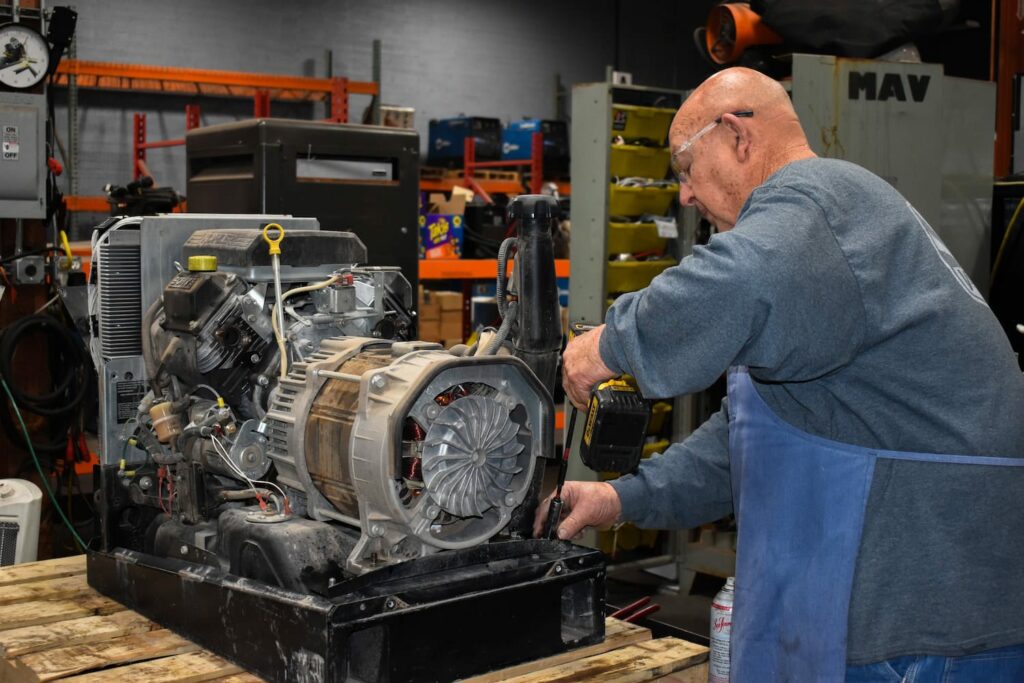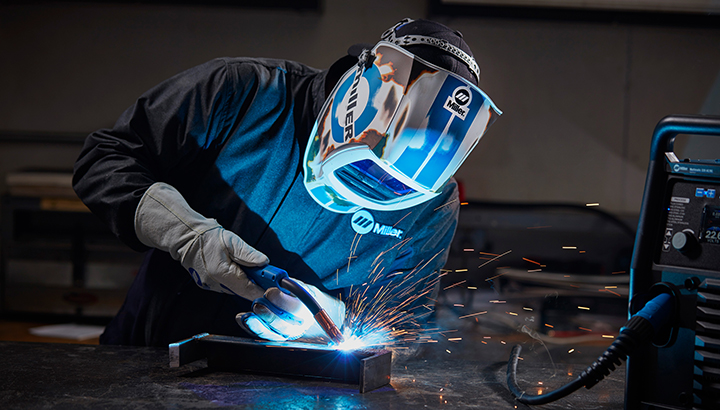Everything about Welding: Key Insights Into Techniques and Ideal Practices for Success
Welding includes a range of strategies, each matched for details products and applications. Understanding these approaches, such as GMAW, SMAW, and TIG, is important for attaining ideal results. Additionally, the right equipment and safety and security practices can not be ignored. As prep work and repairing play vital roles in the welding process, understanding these components can substantially improve the top quality of the final item. What are the key aspects that guarantee an effective weld?
Understanding Different Welding Methods
Welding strategies encompass a range of methods, each fit to specific applications and materials. Amongst one of the most common techniques are Gas Metal Arc Welding (GMAW), Shielded Metal Arc Welding (SMAW), and Tungsten Inert Gas Welding (TIG) GMAW, additionally referred to as MIG welding, is preferred for its speed and convenience, making it excellent for slim products. SMAW, or stick welding, is favored for its simplicity and performance in outdoor environments, specifically with thicker metals. TIG welding uses precision and control, making it suitable for elaborate work and non-ferrous steels (Montana Mobile Welding and Repair Belgrade Welding). Each technique has its unique advantages and factors to consider, permitting welders to pick the very best technique based on the task's needs, material type, and desired results. Recognizing these methods is essential for effective welding
Necessary Welding Devices and Tools
While numerous welding methods call for specific skills, the appropriate devices and tools are similarly vital for attaining quality results. Necessary welding devices includes welding equipments, which vary depending upon the technique-- such as MIG, TIG, or stick welding. Protective gear, consisting of helmets, gloves, and aprons, warranties security and comfort during the procedure. In addition, fixtures and clamps assist secure materials in area, making sure precision in welds. Consumables like welding poles, cord, and shielding gas are additionally critical elements that influence the high quality of the weld. Devices such as grinders and cutters assist in surface area prep work and post-weld finishing, adding to a professional result. Buying top notch tools eventually improves the efficiency and effectiveness of welding projects.
Safety Practices in Welding
Correct safety and security techniques are important in the welding industry to safeguard workers from possible risks. Welders need to wear proper individual protective tools (PPE), consisting of headgears with appropriate shading, handwear covers, and flame-resistant clothes. Adequate air flow is crucial to decrease exposure to damaging fumes and gases generated during the welding procedure. Furthermore, workers need to be learnt the proper handling of welding tools to stop accidents. Fire precaution, such as maintaining combustible materials away from the welding location and having fire extinguishers easily available, are needed. Routine assessments of tools and offices can assist determine potential threats prior to they result in accidents. By adhering to these safety techniques, welders can develop a more secure working atmosphere and lessen threats related to their trade.
Preparing Products for Welding
Preparing products for welding is a crucial step that significantly affects the quality and honesty of the end product (Montana Mobile Welding and Repair). Correct prep work includes cleansing the surfaces to get rid of pollutants such as corrosion, dust, and oil, which can jeopardize the weld. Techniques such as grinding, fining sand, or utilizing solvents are frequently employed to achieve a tidy surface. Furthermore, making sure that the products fit with each other snugly is vital; voids can bring about weak welds. It's additionally crucial to take into account the alignment and positioning of the elements, as this will certainly impact the simplicity of welding and the final outcome. Choosing the appropriate filler material and ensuring compatibility with the base metals is crucial for achieving strong, sturdy welds.
Tips for Achieving High-Quality Welds
Attaining high-quality welds requires interest to detail and adherence to best methods throughout the welding process. Appropriate joint prep work is necessary, guaranteeing surface areas are clean and free from pollutants. Selecting the ideal filler product and welding technique based upon the base metals is important for suitable bonding. Preserving consistent traveling speed and angle while welding can promote and protect against defects uniformity. In addition, managing warmth input is vital; too much heat can cause bending and deteriorated joints. If necessary, consistently evaluating the welds throughout the process enables for prompt changes. Utilizing appropriate post-weld therapies, such as cleansing and stress relief, can enhance the resilience and stability of the weld, eventually ensuring a successful result.
Repairing Common Welding Issues
Welding often presents difficulties that can influence the high quality and stability of the last product. Usual problems such as porosity, irregular weld beads, and getting too hot can arise, each needing details fixing methods. Understanding these issues is crucial for welders to boost their abilities and accomplish suitable results.
Porosity Troubles Discussed
Although porosity can frequently be overlooked, it stays an essential concern in welding that can jeopardize the stability of a completed product. Porosity describes the existence of tiny gas pockets within the weld bead, which can compromise the joint and lead to early failing. This issue usually emerges from impurities, moisture, or inappropriate shielding gas coverage throughout the welding procedure. To mitigate porosity, welders must verify that the base products are dry and clean, utilize suitable securing gases, and maintain constant welding specifications. Regularly evaluating the devices and environment can likewise aid identify possible issues before they show up in the weld. Attending to porosity effectively is essential for attaining strong, sturdy welds that fulfill high quality criteria.

Inconsistent Weld Beads
Inconsistent weld beads can substantially affect the high quality and strength of a completed item. Numerous factors contribute to this concern, consisting of incorrect travel rate, inaccurate amperage settings, and inconsistent electrode angles. When the welder relocates too rapidly, a bead may show up slim and do not have penetration, while relocating too slowly can trigger too much accumulation. Furthermore, utilizing the incorrect amperage can cause either undercutting or too much spatter, both of which concession weld integrity. The welder's method, such as irregular torch movement, can likewise bring about unequal grain appearance. To alleviate these problems, welders should concentrate on keeping consistent, controlled motions and guaranteeing correct devices setups to attain uniformity in their welds. Consistency is key to achieving solid and reputable welds.
Overheating and Warping Issues
Extreme warmth during the welding process can result in considerable overheating and buckling issues, affecting the structural integrity of the workpiece. These troubles typically materialize as distortion, which can jeopardize positioning and fit-up, making more assembly challenging. Variables adding to overheating consist of the choice of welding specifications, such as voltage and take a trip speed, in addition to the kind of material being welded. To minimize these concerns, welders must maintain constant traveling rate and ideal warmth input while keeping an eye on the work surface temperature. Furthermore, pre-heating or post-weld warmth treatment can aid relieve anxieties triggered by rapid cooling - Montana Mobile Welding and Repair. Routine inspection and adherence to ideal practices are crucial in protecting against overheating and ensuring the long life and dependability of bonded frameworks
Regularly Asked Concerns
What Are the Career Opportunities in the Welding Sector?
The welding sector uses diverse job opportunities, consisting of settings as welders, assessors, educators, and designers. Experts can operate in manufacturing, building and construction, aerospace, and vehicle sectors, profiting from strong demand and competitive incomes in different roles.
Exactly How Can I Enhance My Welding Rate Without Compromising High Quality?
To boost welding speed without sacrificing top quality, one must practice reliable techniques, keep tools, maximize setups, and improve hand-eye sychronisation. Normal training and looking for comments can additionally substantially contribute to accomplishing quicker, top notch welds.
What Certifications Are Readily Available for Welders?
Countless certifications exist for welders, consisting of those from the American Welding Culture (AWS), the National Facility for Building Education And Learning and Research Study (NCCER), and various industry-specific companies. These credentials enhance employability and demonstrate ability effectiveness.
Just How Does Welding Influence the Qualities of Metals?
Welding influences the properties of steels by changing their microstructure, which can result in modifications in ductility, strength, and solidity. Warm input and air conditioning rates throughout the procedure considerably influence these product features.
Can I Weld Dissimilar Metals With Each Other?
